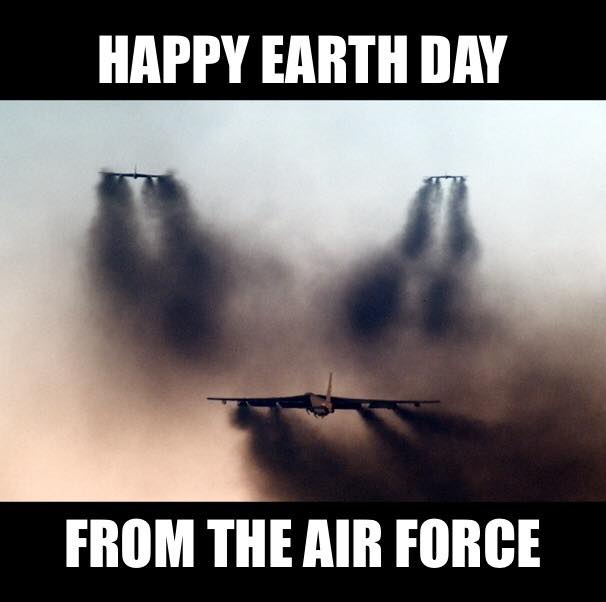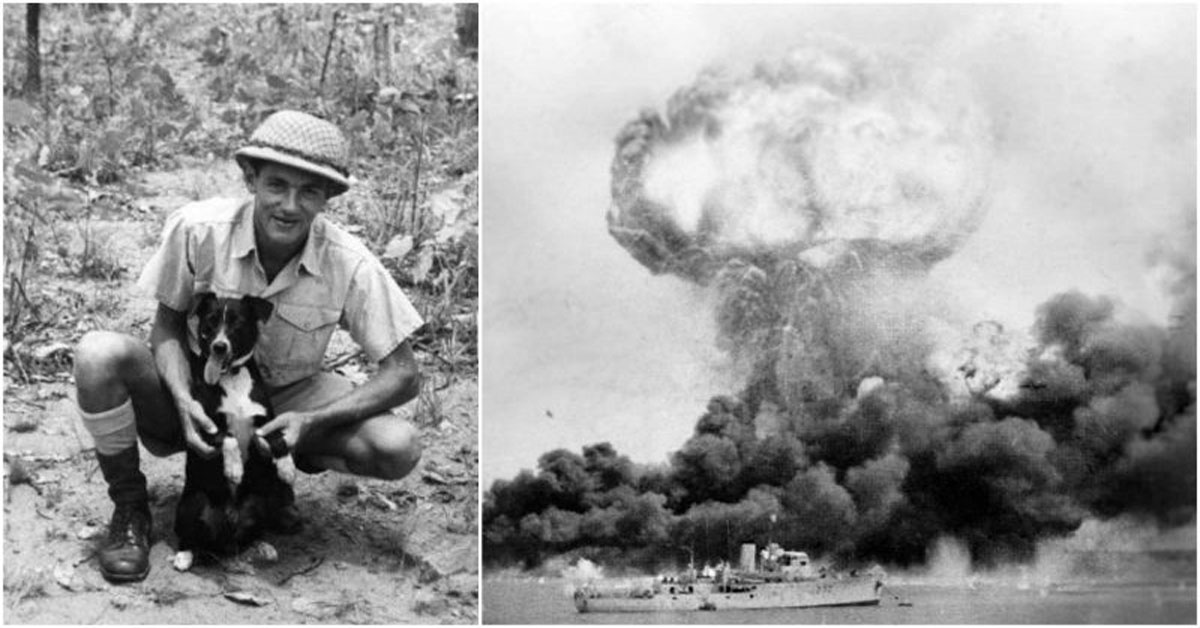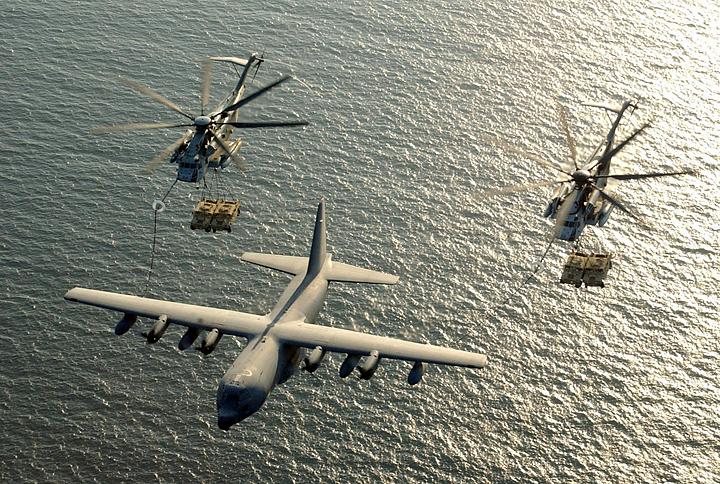
You know you haven’t cleaned your freezer out…
Two B-1’s depart Nellis AFB, at night, with full afterburners!
The US Air Force has the greatest ‘composure test’ ever
Happy Earth Day

Is this even legal?
Gunner – The hero dog who could differentiate between the sounds of Japanese and Allied aircraft

During WW2, there was an Australian dog whose hearing was so acute that it could warn air force personnel of incoming Japanese planes 20 minutes before they came and before they showed up on radar. He could also differentiate the sounds between allied and enemy planes.
Gunner was a male kelpie dog who became famous for his reliability to alert Allied airmen that Japanese aircraft were approaching Darwin during the WWII.
He appears to have been a stray when was found in February 1942, under the ruins of a mess hut, after the first Japanese air raid on Darwin. He was found by personnel from No. 2 Squadron RAAF who heard the dog whimpering, because of a broken front leg. Gunner was taken to a field hospital, where a medical officer insisted that he could not treat a patient without knowing their name and number. After being told that the patient’s name was “Gunner” and his number was “0000”, the doctor set and plastered Gunner’s leg. At that moment Gunner officially entered the records of the Royal Australian Air Force.
Leading Aircraftman Percy Westcott assumed ownership of him and became his master and handler. The young Gunner was badly shaken by his experiences, but quickly responded to the care and attention of Westcott and others from 2 Squadron.
A week later, Gunner first demonstrated his hearing skills. As the RAAF personnel went about their daily routine, Gunner became agitated and started to jump and whine. Not long after, the sound of approaching aircraft engines was heard. A few minutes later, Japanese raiders appeared above Darwin and began strafing and bombing the town. Two days later, Gunner again began jumping and whimpering, and not long after came another attack. This pattern was repeated several times over the weeks that followed. Long before the sirens sounded, Gunner would head for shelter and become agitated.
Gunner’s hearing was so good he was able to warn RAAF personnel of Japanese air attacks, up to 20 minutes before they arrived and before they were detected by the rudimentary radars available at the time. Gunner didn’t behave the same way when he heard Allied aircraft approaching; he could differentiate between the sounds of the engines used by Japanese and Allied airplanes. Gunner was so good at it that the commanding officer, Wing Commander A. B. “Tich” McFarlane, gave approval for Westcott to sound an air raid siren whenever Gunner’s jumping or whining alerted him.
Gunner became a big part of the RAAF that he slept under Westcott’s bunk, showered with the airmen in the shower block, sat with the men at the outdoor movies, and went up with the pilots during practice take-off and landings. When Westcott was posted to Melbourne 18 months later, Gunner stayed in Darwin. Gunner’s fate is undocumented.
The post Gunner – The hero dog who could differentiate between the sounds of Japanese and Allied aircraft appeared first on Aviation Humor.
Most Unusual “Kill” (Victory) Markings Seen on the Side of Aircraft
A victory marking (also called a kill marking) is a symbol applied to the side of a military aircraft to denote a victory achieved by the aircraft’s pilot.
The use of victory markings originated during World War II and frequently took the form of the roundel or national flag of the nationality of the aircraft defeated.
But nowadays you can find a bit unusual kill markings as well…

Kill-marking of a Decepticon on USAF AC-130H (Heavy Metal) that appeared in 2007 film “Transformers”

Israeli Air Force F-16A Netz 107 with 6.5 kill marks of other aircraft and one kill mark of an Iraqi nuclear reactor, a world record for an F-16.

Kill markings for broken refuelling probes on a Canadian F/A-18.

Fuerza Aérea Colombiana, Douglas/Basler AC-47T “Fantasma” COIN gunship displaying her kill marks under one of her GAU-19 .50 BMG Gatling gun.

A LTV A-7E “Corsair II” from VA-72 flown by Cdr. J. R. Shooter Sanders is shown close-up with his combat mission decorations.

USAF A-10A showing its kill markings from Desert Storm, 1991
The post Most Unusual “Kill” (Victory) Markings Seen on the Side of Aircraft appeared first on Aviation Humor.
Just Some Insults Learned In the Air Force
Lots Of Aviation Going On Here
Four turboprops on the C-130, three turboshafts on the helo, all to move a Humvee. And you thought your SUV got bad mileage…


A particularly intimidating picture of the Hawaii Mars

Aircraft Aircraft Carrier

A refuelling trifecta

This is a really interesting book!

Yo Dawg! We heard you liked wings, so we put wings on your wings!
This picture was taken in 1994, the wing part was going to be fitted to the second An 225, which was unfortunately never completed. Also note the 3rd tail fin added to the An 22.

And here we see the endangered DeHavilland undergoing a snow birth
A C-124 delivering a ski plane to McMurdo Station, Antarctica

If you work in the Air Force, never leave your plane overnight at an Army owned airfield

Wouldn’t it be great to have tail-top seats on every airliner?

For when you can’t get enough data

Meanwhile In Albania

The post Lots Of Aviation Going On Here appeared first on Aviation Humor.
An extremely low flyby by a group of Sepecat Jaguars
Ok, that was pretty damn low!
The second pilot skimmed above the roofs.
The third flew thru that gate!
Developed in the 1960s, this versatile combat aircraft has served several air forces and proved its mettle in various roles.
The Sepecat Jaguar emerged from a collaborative venture between British Aircraft Corporation (BAC) and Breguet of France. The aim was to create a cost-effective, versatile, and adaptable aircraft that could meet the requirements of both the Royal Air Force (RAF) and the French Air Force.
The Sepecat Jaguar was designed to excel in the roles of a ground-attack aircraft and a nuclear-capable strike aircraft. Its ability to conduct close air support missions, carry out deep penetration strikes, and deliver precision-guided munitions showcased its adaptability to evolving combat scenarios.
The Jaguar family includes various subvariants tailored to specific operational requirements. The Jaguar GR (Ground Attack/Reconnaissance) and Jaguar M (Marine) versions extended its utility. Additionally, upgrade programs enhanced avionics and capabilities, ensuring the aircraft’s relevance over the years.
As newer and more advanced aircraft entered service, the Sepecat Jaguar underwent phased retirements in some air forces. However, its impact on military aviation and its legacy as a cost-effective and adaptable platform remain ingrained in the history of combat aircraft.
The post An extremely low flyby by a group of Sepecat Jaguars appeared first on Aviation Humor.
We’ll just stick our nose down through the cloud base and see where we are…
The post We’ll just stick our nose down through the cloud base and see where we are… appeared first on Aviation Humor.

















